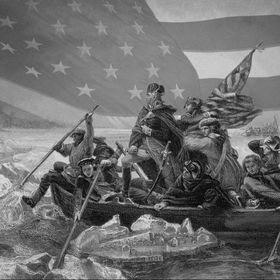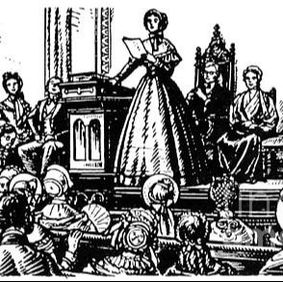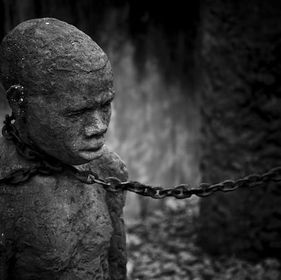HIST 001 A
US History to 1876
Videos, Documents and Info for future reference
|
Week 2
week 3
week 4
week 5
week 6
week 7
week 8
FINAL Primary sources
Primary sources are generally first-hand accounts or records. They may have been written or created during the time period under investigation, or perhaps were written by someone who lived during that time period. Most crucially, they have not been interpreted by anyone else, though they may offer interpretations of the events they describe. Below are four examples of primary sources: a political cartoon, a page of correspondence, the title page of Thomas Paine's Common Sense, and a wartime poster encouraging women workers. As you can imagine, however, there are many more types of primary sources. Countless items can be used by historians as primary sources. Almost anything you can imagine could be used as a primary source in some type of historical research. A fun exercise to help you understand the immensity of available primary sources is to look around the room you're in and ask yourself, "what would historians view or study one hundred years from now to understand the way we live and what we think today?" The list below includes only a few of the types of primary sources utilized by historians. How many more can you add to the list? letters • diaries • autobiographies • plays • novels • short stories • poems scholarly journals • newspapers • popular magazines official memoranda • government documents • census data religious tracts • song lyrics photographs • cartoons • posters • paintings • murals films • television shows • performing arts recordings • email • musical recordings clothing • political campaign signs • pottery • religious icons • tools • furniture secondary source
Secondary sources analyze, interpret, or comment upon primary sources. A secondary source says something about a primary sources, often illustrating patterns of recurring themes. Perhaps the best example of a secondary source is your textbook. Open it to any chapter and read a couple of paragraphs and you will find that the authors have conducted extensive research utilizing primary sources. They have likely consulted other secondary sources as well. They have then written those paragraphs to explain what they have learned and how they understand the people and ideas of the past. The authors have interpreted the sources for you. The list below includes some of the primary sources we’ve already identified accompanies by secondary sources which might, analyze, interpret, or comment upon them. Questions to ask of any source
maps
Maps are yet another valuable historical source, and there are many different kinds of maps.
Identifying the type of map you are using will help you understand what information it can offer. For example, if you wanted to identify the largest U.S. cities in 1920, a satellite map would be of no use. But a census map or political map of 1920 would be very valuable. The BasicsMap analysis requires some very basic steps. First, locate the title of the map. Second, locate the scale of the map, which tells you the proportion of the map, generally in miles or kilometers. Third, locate the map’s legend, which explains the meaning of various colors, symbols, or graphic elements used on the map. Seven QuestionsOnce you’ve completed those steps, the seven questions used to analyze primary source documents are also useful in analyzing a map. You will need to determine, if possible:
A Note on Historical MapsHistorical maps, specifically those created in the past rather than modern maps which portray the past, have a value beyond the information which they convey. Rare and antique maps are highly valued as art and are appreciated for their beauty. As a result, these maps are often used as primary sources not only to interpret historical events but as part of art history, as well. document interpretation
One of the most important skills a historian develops is the ability to evaluate historical documents. This evaluation concerns asking questions of the documents that allows a historian to have insight in a particular topic or period being investigated. This week's documents relate to the weekly module topic. This week's documents relate to the weekly module topic of culture and cultural interaction. If you still need help prioritizing your questions of the document go to the Document Interpretation Tutorial Page. As the introduction to your textbook mentions, History is a story. This means that it's not just memorizing dates that matter, but "how those events relate to one another". Historians study sources to reconstruct the life-styles and events of previous generations (what actually happened in the past), as well as to understand the past as the people who lived it did - to examine their ideas and thoughts about the world. By using sources, historians actually create history. They craft an understanding of the people, events, ideas, trends, and themes of the past based upon their interpretation of those sources. Use the activities below to learn how to analyze various types of sources and to become an historian yourself. |




